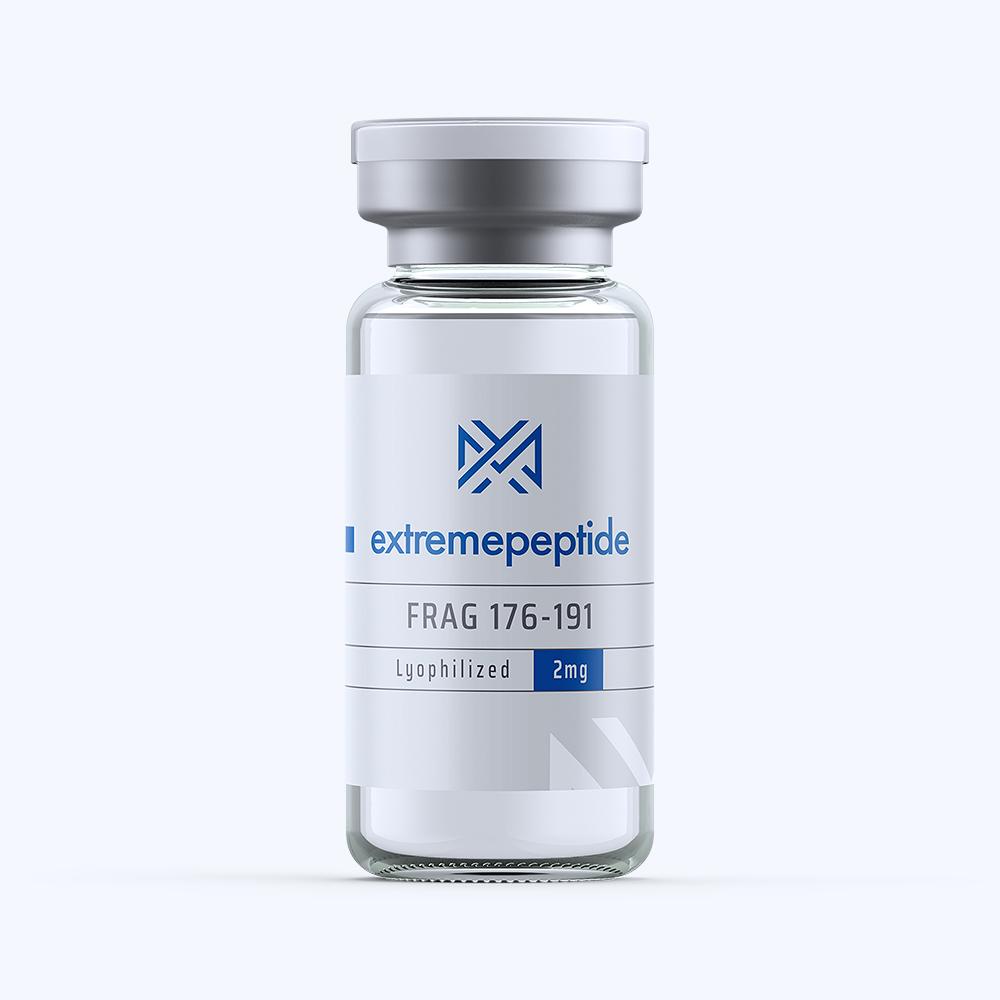(Click here to read our disclaimer)

Studies have claimed that applying fragment 176-191 may increase an animal’s ability to remove stubborn adipose tissue, which will in turn increase muscle mass, energy expenditure and fat oxidation. Studies indicate that this may result in fragment 176-191 being used in future treatments of fat loss or obesity because it is safer to apply to animal research subjects.
Specific Design Structure
Fragment 176-191 was specifically developed to mimic the effect on mass fat reduction when it is controlled in a smaller region of the hormones molecule.
- Because of its unique structure, fragment 176-191 has shown to stimulate lipolysis at 12.5 time stronger rates than a natural hormone in animals. This also allows an animal’s body to slow lipogenesis or the formation of fatty acids within the body.
- Many of the side effects that research has shown when applying additional hormones to animals are not exhibited when applying fragment 176-191. Impaired glucose levels, in particular have not been present, which implies additional potential for fragment 176-191 research.
Current research into fragment 176-191 uses focus on its ability to encourage weight loss in animals. This may also help to slow the aging process in animals that are provided with regular applications of this peptide. However, many conditions that are being researched in connection with fragment 176-191 and application has been developed for research settings, which may influence final results.
Research kits containing fragment 176-191 are designed to be applied regularly, at least 7 days per week in consistent applications to animal test subjects. These should be applied before food is given or before any planned exercise portions of the study.
When you receive fragment 176-191 kits that are designed for research purposes, you will be given vials of white powder that are freeze dried and sterile filtered. These are aqueous soluble, should it be necessary for applications within the confines of your research. Most kits are suitable for applications in animal experiments or cell cultures, but you should read the instructions to determine the specific intentions of the kit you have purchased.
freeze dried and sterile filtered. These are aqueous soluble, should it be necessary for applications within the confines of your research. Most kits are suitable for applications in animal experiments or cell cultures, but you should read the instructions to determine the specific intentions of the kit you have purchased.
When using fragment 176-191 in a research setting, you may store these items at room temperature for up to 2 months: one month at 2-8 degrees Celsius or for 3 months at 20-70 degrees Celsius once the peptide has been reconstituted, so long as the storage conditions are sterile.
Other related articles:
Click here to view our entire PDF research library
Click here to view or download this article in PDF format